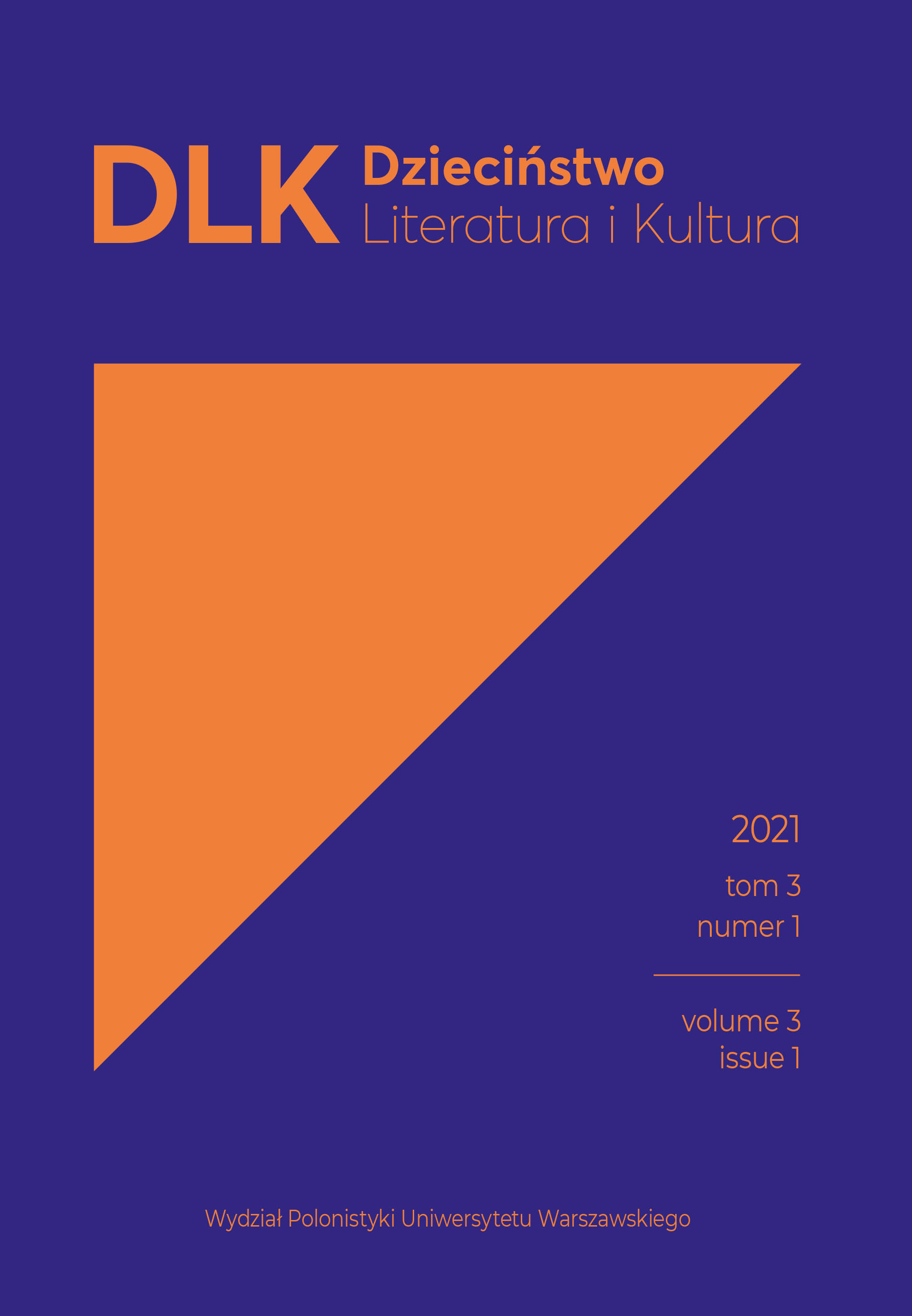“Yer a Wizard”: How Fantasy Fiction Facilitates Playing with Emotions and Reinforces Magical Thinking
Abstract
In this paper, the author argues that fantasy literature serves as a cognitive playground that helps us practise and reaffirm our magical-thinking intuitions. He demonstrates how, just as in magical practices, magic in fantasy fiction becomes a tool for overcoming difficulties and restoring a sense of balance, security, and control. He contends that supernatural agents can be seen as emotional correlatives, giving faces and voices to emotional states and describing a phenomenon from the perspective of how it feels, rather than from a rational viewpoint. This opens up a possibility to articulate those aspects of our emotional lives that are difficult to express in terms of mimetic representation. He posits that, through distancing, fantasy fiction creates a safe environment for engaging with such emotional states, in which magic restores our intuition that no matter how dark our situation appears, we have an inner capacity to overcome it. The main example that is used in the paper is J. K. Rowling’s Harry Potter series.
Keywords
children’s and young adult literature; emotions; fantasy; Harry Potter; magic; magical thinking; supernatural phenomena
References
Alcock, E. J. (1995). The propensity to believe. Annals of the New York Academy of Sciences, 775(1), 64-78. https://doi.org/10.1111/j.1749-6632.1996.tb23128.x.
Atran, S. (2006). The cognitive and evolutionary roots of religion. In P. McNamara (Ed.), Where God and science meet: How brain and evolutionary studies alter our understanding of religion. Vol. 1: Evolution, genes, and the religious brain (pp. 181–208). Praeger.
Boyd, B. (2009). On the origin of stories: Evolution, cognition, and fiction. Belknap.
Boyer, P. (2001). Religion explained: The evolutionary origins of religious thought. Basic Books.
Clasen, M. (2017). Why horror seduces? Oxford University Press.
Cockrell, A. (2006). Harry Potter and the witch hunters: A social context for the attacks on Harry Potter. The Journal of American Culture, 29(1), 24–30. https://doi.org/10.1111/j.1542-734X.2006.00272.x.
Coelho, C. M., Zsido, A. N., Panrapee, S., & Clasen, M. (2021). Super-natural fears. Neuroscience & Biobehavioral Reviews, 128, 406–414. https://doi.org/10.1016/j.neubiorev.2021.06.036.
Collett-White, M. (2007, August 9). Tolkien novel published 34 years after his death. Reuters. Retrieved December 28, 2023, from https://www.reuters.com/article/us-arts-tolkien-novel-idUSL1626402420070416.
Columbus, C. (Director). (2001). Harry Potter and the philosopher’s stone [Film]. Warner Bros.
Columbus, C. (Director). (2002). Harry Potter and the chamber of secrets [Film]. Warner Bros.
Cuarón, A. (Director). (2004). Harry Potter and the prisoner of Azkaban [Film]. Warner Bros.
Easterlin, N. (2012). A biocultural approach to literary theory and interpretation. The Johns Hopkins University Press.
Gottschall, J. (2012). The storytelling animal: How stories make us human. Houghton Mifflin Harcourt.
Guthrie, S. E. (1995). Faces in the clouds: A new theory of religion. Oxford University Press.
Halberstam, J. (1995). Skin shows. Gothic horror and the technology of monsters. Duke University Press. https://doi.org/10.2307/j.ctv1220pqp.
Hanegraaff, W. J. (2019). Rejected Knowledge… In W. J. Hanegraaff, P. J. Forshaw, & M. Pasi (Eds.), Hermes explains: Thirty questions about Western esotericism. Celebrating the 20th anniversary of the Centre for History of Hermetic Philosophy and Related Currents at the University of Amsterdam (pp. 145–152). Amsterdam University Press.
Hanegraaff, W. J. (2005). Forbidden knowledge: Anti-esoteric polemics and academic research. Aries, 5(2), 225–254. https://doi.org/10.1163/1570059054761703.
Hjelm, T. (2006). Between Satan and Harry Potter: Legitimating Wicca in Finland. Journal of Contemporary Religion, 21(1), 33–48. https://doi.org/10.1080/13537900500381732.
Hutson, M. (2012). The 7 laws of magical thinking: How irrational beliefs keep us happy, healthy, and sane. Penguin.
Jackson, R. (2009). Fantasy: The literature of subversion. Methuen.
Lévi, E. (1922). The paradoxes of the highest science. Theosophical Publishing House. (Original work published 1873).
Liggins, E. (2020). The haunted house in women’s ghost stories: Gender, space and modernity, 1850–1945. Palgrave Macmillan.
Malinowski, B. (1948). Magic, science and religion and other essays (R. Redfield, Ed.). The Free Press.
Mithen, S. (1996). The prehistory of the mind: A search for the origins of art, religion and science. Phoenix.
Nemeroff, C., & Rozin, P. (2000). The making of the magical mind: The nature and function of sympathetic magical thinking. In K. S. Rosengren, C. N. Johnson, & P. L. Harris (Eds.), Imagining the impossible: Magical, scientific, and religious thinking in children (pp. 1–34). Cambridge University Press.
Newell, M. (Director). (2005). Harry Potter and the goblet of fire [Film]. Warner Bros.
Palmer, P. (2012). The queer uncanny: New perspectives on the Gothic. University of Wales Press.
Pantić, N. (2021). Networks of the holy: Religion and magic in eighteenth-century Ottoman Province of Damascus [Unpublished doctoral dissertation]. Central European University. Retrieved December 28, 2023, from https://www.etd.ceu.edu/2022/pantic_nikola.pdf.
Piaget, J. (1928). The child’s conception of the world (J. & A. Tomilson, Trans.). Routledge. (Original work published 1925).
Rowe, A. (2018, June 19). Science fiction and fantasy book sales have doubled since 2010. Forbes. Retrieved December 28, 2023, from https://www.forbes.com/sites/adamrowe1/2018/06/19/science-fiction-and-fantasy-book-sales-have-doubled-since-2010/?sh=732b6c742edf.
Rowling, J. K. (1998). Harry Potter and the Sorcerer’s Stone. Scholastic. (Original work published 1997).
Rowling, J. K. (1999a). Harry Potter and the Chamber of Secrets. Scholastic. (Original work published 1998).
Rowling, J. K. (1999b). Harry Potter and the prisoner of Azkaban. Scholastic.
Rowling, J. K. (2000). Harry Potter and the Goblet of Fire. Scholastic.
Rowling, J. K. (2003). Harry Potter and the Order of the Phoenix. Scholastic.
Rowling, J. K. (2005). Harry Potter and the Half-Blood Prince. Scholastic.
Rowling, J. K. (2007). Harry Potter and the Deathly Hallows. Scholastic.
Šarić, J. (2001). A defense of Potter, or when religion is not religion: An analysis of the censoring of the Harry Potter books. Canadian Children’s Literature, 103, 6–26. Retrieved December 28, 2023, from https://ccl-lcj.ca/index.php/ccl-lcj/article/view/3795/3357.
Scholastics. (2018). 20 facts about the Harry Potter book series. Retrieved December 28, 2023, from http://mediaroom.scholastic.com/files/20-HARRY-POTTER-FACTS_SEPT2018.pdf.
Shields, A. L. F. (2018). In-between worlds: Exploring trauma through fantasy [Unpublished doctoral dissertation]. University of St Andrews, UK. Retrieved December 28, 2023, from http://hdl.handle.net/10023/16004.
Sperber, D. (1994). The modularity of thought and the epidemiology of representations. In L. A. Hirschfeld & S. A. Gelman (Eds.), Mapping the mind: Domain specificity in cognition and culture (pp. 39–67). Cambridge University Press.
Subbotsky, E. (2010). Magic and the mind: Mechanisms, functions, and development of magical thinking and behavior. Oxford University Press.
Subbotsky, E., Hysted, C., & Jones, N. (2010). Watching films with magical content facilitates creativity in children. Perceptual and Motor Skills, 111(1), 261–77. https://doi.org/10.2466/04.09.11.PMS.111.4.261-277.
Winkelman, M., & Baker, J. R. (2016). Supernatural as natural: A biocultural approach to religion. Routledge.
Yates, D. (Director). (2007). Harry Potter and the Order of the Phoenix [Film]. Warner Bros.
Yates, D. (Director). (2009). Harry Potter and the Half-Blood Prince [Film]. Warner Bros.
Yates, D. (Director). (2010). Harry Potter and the Deathly Hallows – Part 1 [Film]. Warner Bros.
Yates, D. (Director). (2011). Harry Potter and the Deathly Hallows – Part 2 [Film]. Warner Bros.
Zunshine, L. (2006). Why we read fiction: Theory of mind and the novel. Ohio State University Press.
University of Szeged Hungary
https://orcid.org/0009-0007-5241-7683
Armin Stefanović – MA, prepares a doctoral dissertation at the Doctoral School for Literatures and Cultures in English, University of Szeged (Hungary). His research interests include biocultural studies, literary theory, fantasy fiction, the supernatural, and digital research tools. Contact: arminstefanovic@gmail.com.

This work is licensed under a Creative Commons Attribution 4.0 International License.
Open Access Policy
All articles presented on the pages of ”Dzieciństwo. Literatura i Kultura” are published in open access under a Creative Commons license - Attribution 4.0 International (CC BY 4.0). It means that:
- they can be made available and quoted under the condition of explicit and clear indication of the author/authors of the referenced text;
- you cannot use legal or technological means that would limit others in using the text under the terms of the license.
More information: https://creativecommons.org/licenses/by/4.0/





